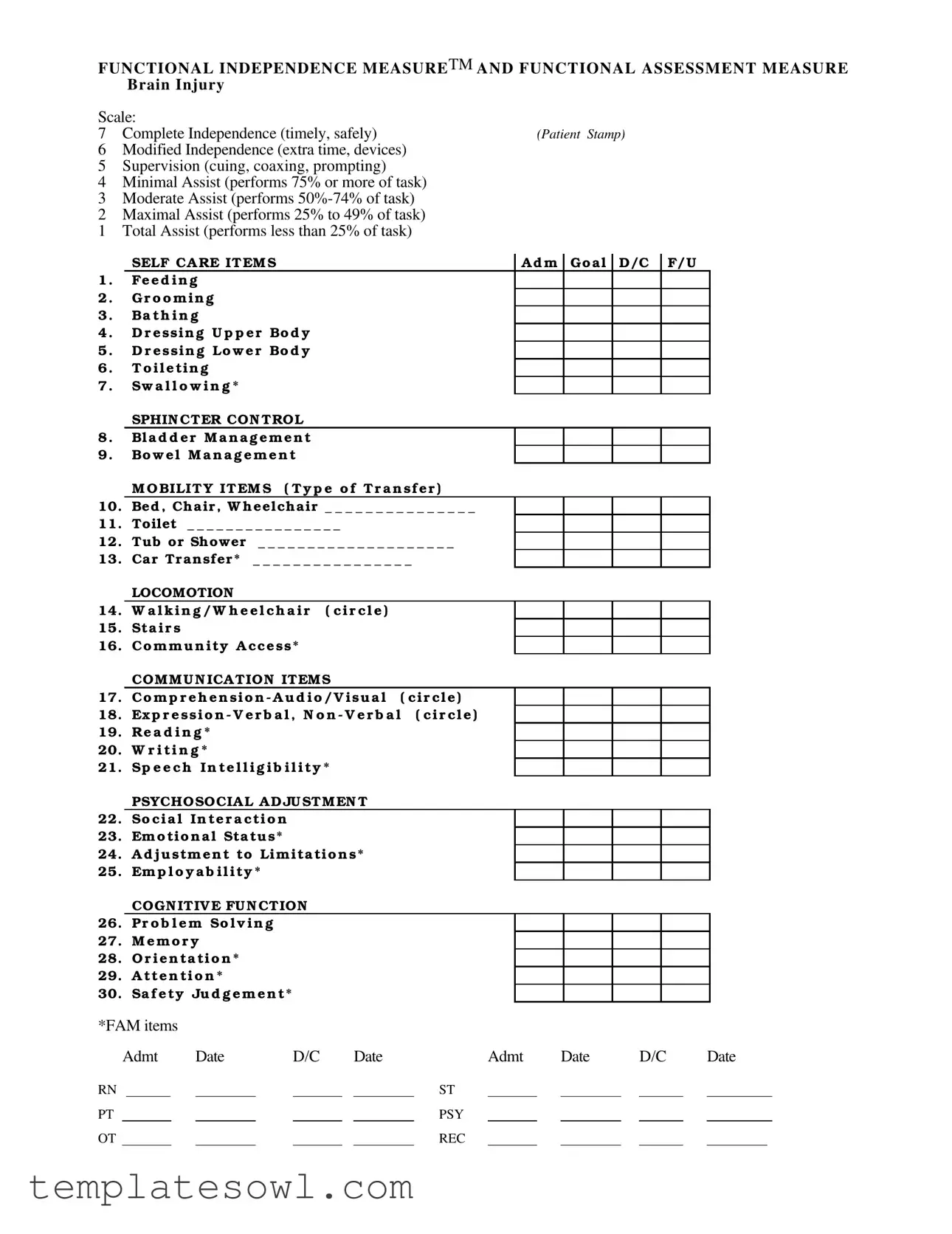What is the FIM Scale form and its purpose?
The FIM Scale form, or Functional Independence Measure, is a standard tool used to assess a patient's level of functional independence in various daily activities following a brain injury. It provides a comprehensive evaluation across multiple domains, including self-care, mobility, communication, psychosocial adjustment, and cognitive function. This assessment helps healthcare professionals create effective rehabilitation plans tailored to each patient's specific needs.
How are patients scored on the FIM Scale?
Patients are scored using a scale that ranges from 1 to 7. A score of 7 indicates complete independence with no assistance required, while a score of 1 reflects total assistance needed from caregivers. Each level assesses the patient's ability to perform specific tasks, such as feeding or dressing, under timely and safe conditions. This scoring system allows for clear communication about a patient's capabilities and progress over time.
What types of activities are evaluated in the FIM Scale?
The FIM Scale evaluates several key areas, including self-care activities like feeding, grooming, and toileting. Mobility tasks such as transfers from bed to wheelchair and walking are also assessed. Additional areas include communication abilities, psychosocial interaction, emotional status, and various cognitive functions like memory and problem-solving. By covering a wide range of activities, the FIM Scale provides a holistic view of a patient's functioning.
How is the FIM Scale used in rehabilitation?
In the rehabilitation process, the FIM Scale informs treatment planning and progress tracking. By assessing a patient's initial functional capabilities, healthcare providers can set relevant goals and select appropriate interventions. Periodic reassessments using the FIM Scale help monitor a patient's improvement, allowing adjustments to the rehabilitation plan as needed. This iterative process promotes patient-centered care and supports optimal recovery paths.
Can FIM Scale results be used for insurance or reporting purposes?
Yes, the results from the FIM Scale can be utilized for insurance purposes and reporting to regulatory bodies. Many insurance providers recognize the FIM Scale as a validated tool for demonstrating the necessity of rehabilitation services. The data collected not only details a patient's level of functioning but also helps justify the care provided, making it useful for billing and compliance requirements.
Who completes the FIM Scale assessment?
The FIM Scale assessment is typically completed by trained healthcare professionals, including nurses, occupational therapists, and physical therapists. These individuals have the expertise necessary to accurately observe and evaluate a patient's performance in various tasks. Their observations, combined with patient input, lead to a reliable assessment that guides the rehabilitation process.

